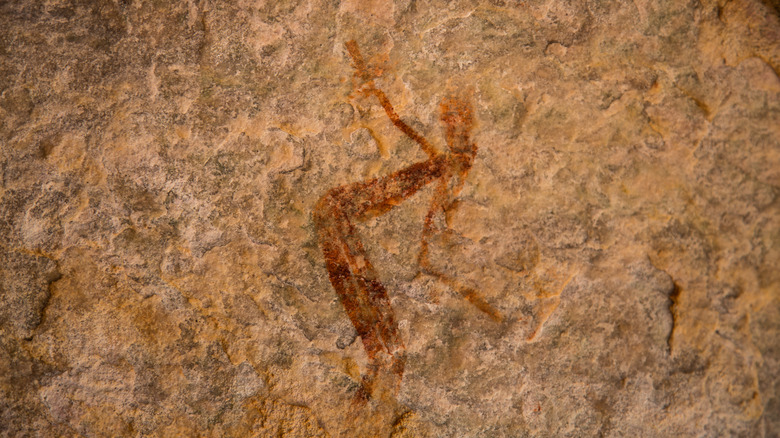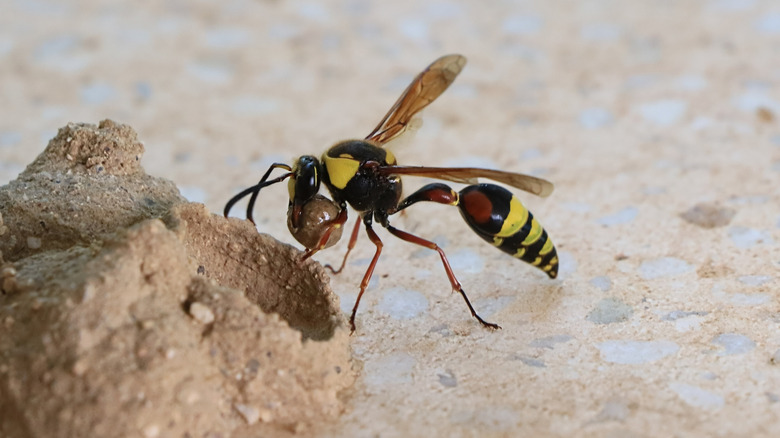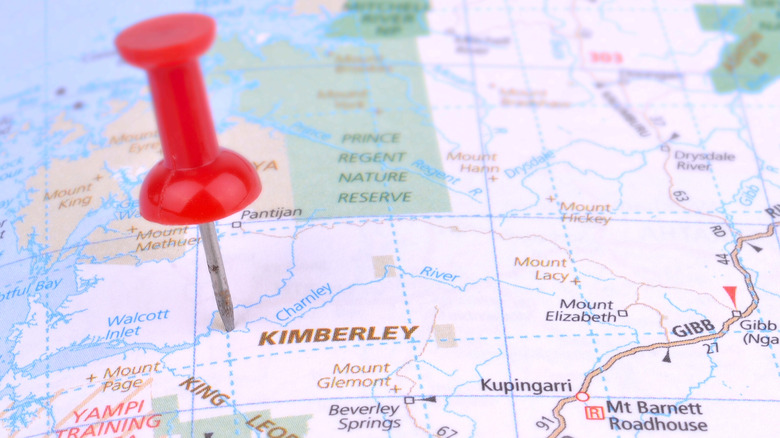How A Wasp Nest Showed These Australian Cave Paintings May Be 5,000 Years Younger Than Expected
The Kimberley region of Western Australia contains some of the earliest paintings in human history. The artwork found here comes from many different time periods, in a variety of different styles (via Science Advances, 2020). Some of the very oldest pieces have been difficult for scientists to date.
Hidden among the stones, the Gwion paintings are some of the region's most spectacular and talked about pieces. First discovered by western visitors in 1891, they are still poorly understood today. These lithe, ghostly human silhouettes appear scattered across a staggering 100,000 different sites, and they have been given wildly different dates by different people (via The Sydney Morning Herald).
Many researchers have been desperate to know if the paintings were created in the Pleistocene Age (the last ice age when wooly mammoths still roamed the earth) or the Holocene (our human-dominated era). Gwion rock art has sometimes been given the very ancient Pleistocene date of around 17,000 years old. In 2020, enterprising scientists were able to adjust that figure to a much younger date, by using material found in mud wasp nests embedded in the rock face.
Dating the paintings
Today, archaeologists often rely on radiocarbon dates to estimate the age of an object. Radiocarbon dates can pinpoint how old organic material is by measuring the steady breakdown of radioactive carbon-14 in that object (via Nature). Unfortunately, that means no carbon material = no date. The Gwion rock art found in Kimberly presented scientists with this very problem: The ocher pigments the artists used are undatable (via Scientific American). In such cases, scientists often resorted to dating cave paintings by style, coming up with some notoriously inaccurate estimates.
Fortunately, in 1997, one researcher discovered that ancient mud wasps had built their nests over some of the paintings, a piece of good fortune that allowed scientists to come up with a minimum age range (via Smithsonian Magazine).
By assessing the quartz crystals used in the nests, scientists came up with a date of approximately 17,000 years old, but the team's methods were deemed to be faulty and dismissed. Then, in 2020, archaeologists found charcoal in a selection of 24 nests, construction both under and over the paintings. The charcoal retrieved from the motifs provided the much sought-after C-14 dates the team needed and confirmed the paintings were (mostly) much younger than was generally believed.
Old outliers
According to the study published in the journal Science Advances, 21 paintings were examined at 14 sites, giving a cluster of dates around 12,000 years ago. For the most part, the artworks were created over the course of the same thousand-year period. However, two paintings were found to be much older, and the oldest one matched the original estimate of 17,000 years old (via Smithsonian Magazine).
While the researchers were excited to be able to place the paintings in the Late Pleistocene, Dr. Ouzman, who worked on the project, has remarked that the paintings themselves were just a small part of a very long tradition in Kimberley — and that much more dating will be carried out (via The University of Western Australia). The oldest known painting in Australia was identified back in 2021 in the same area — a picture of a kangaroo from around 17,300 years ago (via The Guardian).


